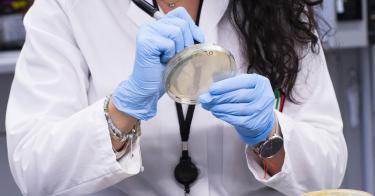COVID-19, the new strain of coronavirus that originated in the Hubei province of China, has national governments struggling to keep up with the pandemic as it takes root in country after country.
The global response to COVID-19 has been varied and continues to evolve with Israel implementing broad quarantine requirements for travelers and Italy recently declaring a nationwide lockdown.
Understandably, there has been much confusion and panic, as well as indifference and nonchalance. In the face of crisis, panic is never helpful but nonchalance toward the pathogen will lead only to increased transmission and preventable illnesses, hospitalizations, and deaths.
Coronavirus is a group of viruses that that include the viruses that cause severe acute respiratory syndrome (SARS) and Middle East Respiratory Syndrome (MERS).
COVID-19 is a novel strain, which means it was unknown to humans before the initial outbreak in Wuhan. But because of its relation to these other coronaviruses, it has a similar disease course.
COVID-19 causes a respiratory disease that can be relatively mild or far more severe. The illness usually begins with a high fever, cough, shortness of breath, and difficulty breathing, and in more severe cases may progress to pneumonia, respiratory distress, and/or organ failure.
Treatment for COVID-19 is similar to that of other severe respiratory diseases, namely symptomatic and supportive care as well as treating complications from the disease; many hospitalized patients require supplemental high-flow oxygen or mechanical ventilation.
Worldwide, the latest World Health Organization report shows more than 109,000 confirmed cases and 3,809 deaths. This comes out to a case fatality ratio of 3.5%. These situation reports are updated daily.
Case fatality is the proportion of deaths caused by a disease to the number of confirmed cases of the disease and is generally used to measure the lethality of a disease.
Because the outbreak began in China, it was unable to prepare and was hit hardest. Excluding China, there are 38,674 cases and 686 deaths, resulting in a case fatality ratio of 2.4%. Italy has been hard hit, with more than 7,000 cases, 366 deaths to date, and a case fatality of 5%.
Compare these numbers to the case fatality ratio of this year’s influenza season: 0.06–0.11% in the United States, and we find the case fatality rate of global COVID-19 is one to two orders of magnitude greater than that of influenza in the U.S.
The COVID-19 case fatality ratio in the United States is inflated because we have relatively few confirmed cases and thus is not useful for comparison.
COVID-19, thus, is not “just like the flu.” It may or may not ultimately infect and kill as many people as influenza viruses, but those who do contract the disease are at greater risk. The two viruses are bad, but they are different.
As mentioned, the case fatality of COVID-19 in the United States is currently 5.1%, with 11 deaths out of 213 confirmed cases. This likely will decrease as more testing finds more cases of the disease that do not result in death. The relatively high rate in America likely is inflated because of deaths of travelers of advanced age and outbreaks in nursing homes.
This last point, that older people seem particularly susceptible to severe disease, has caused some controversy.
Most infected with the virus will develop only mild to moderate flu-like disease, which will cause some to take a cavalier attitude toward the disease and downplay the severity of the pandemic. But everyone knows someone who is susceptible to severe disease.
Not only the elderly are at heightened risk, but those with weakened immune systems, such as transplant and cancer patients, individuals with chronic lung disease such as COPD or cystic fibrosis, or anyone with an otherwise weak constitution.
Writer and mother Shannon Last illustrated the point in a tweet:
Accidental pro-tip: my kids have been whinging about extra handwashing. As soon as I named the actual people this protects--our elderly neighbors Doris & Bob, our pregnant best friend, and a couple newborns at church--they stopped complaining. Just needed human faces!
— Shannon Last (@shannon_last) March 9, 2020
COVID-19 has proven highly communicable. Those infected are likely to spread it to others. Early studies of COVID-19 in China have estimated that each infected person will spread the virus to 2-3.1 other individuals, which is comparable to SARS-CoV, the virus responsible for the 2002 outbreak of SARS.
Parents, grandparents, friends, neighbors, and any number of people we come across on a daily basis may be susceptible to the severe form of the disease.
The virus is not a death sentence for the vast majority of those who contract it, but all of us need to take the virus seriously for the sake of those at greater risk, by practicing proper hygienic practices, self-quarantines in the event of mild-moderate respiratory illness, and social distancing even if asymptomatic, especially if exposed to someone who was ill.
Of course, anyone in respiratory distress should call emergency medical services and be clear about the nature of the illness.
The United States is relatively well-prepared to withstand pandemic, but this is a system that involves us all. Each of us must do our parts to slow down the spread of the virus.
This means refraining from panicking with undue alarm as most who contract the disease not only will survive but will experience only a mild to moderate illness. Nor does it mean dismissal of a disease that is highly lethal to the old and immunocompromised, some of the most cherished people in society.
This means keeping a clear-eyed view of the reality of the virus and the responsibility each of us has to prevent its spread.
This piece originally appeared in The Daily Signal on 3/11/20



